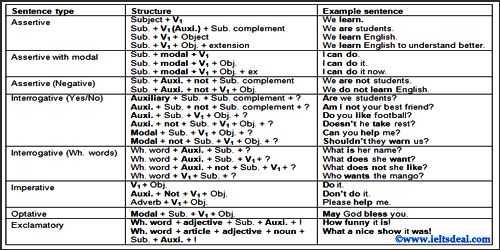IELTS Grammar: Present Indefinite/ Simple Present Tense
Like all other exams, Present Indefinite Tense is the most used tense in IELTS. It is mandatory for learners to have a clear concept of this basic grammar. So, here is a detailed post explaining the structure, usage, and examples of Present Indefinite Tense which is also known as Simple Present Tense.

The simple present tense is the first one of four forms of the present tense in English. We generally use it to explain habitual facts, stable or constant situations, general and universal truths, timed or fixed arrangements, and so on.
Structure of Simple Present Tense/ Present Indefinite Tense:
Look at this table of some basic forms with different sentence patterns:

Here, I’ve explained some common and most standard uses of this tense.
THE STANDARD USAGE OF SIMPLE PRESENT TENSE:
- To convey habitual facts or repetitive actions:
I go to school everyday.
They don’t visit here often. Robbie never looks at this picture.
Does your father smoke sometimes?
Look at the frequency adverbs here (e.g. usually, always, frequently, generally, sometimes, rarely, often, never, normally, every day). They are frequently used to indicate a regular action.
- To describe factual information, like truths those are generally accepted or scientific facts:
Most guardians get generally worried about their children’s physical health than mental health.
Water freezes or melts at 0°C.
Water has no shape.
N.B.: We can often see here the use of frequency adverbs such as: normally, usually, generally, etc.
- To define permanent status something or someone:
He holds the record of taking maximum catches behind the stamps.
She has two degrees in Business Studies.
- To give directions:
She must turn left and then continue to walk straight to the beach.
- To offer instructions:
Add milk with a pinch of brown sugar at first, and then put three tablespoons of honey. After that; stir it slowly for two minutes.
N.B.: take a look at the sequence markers here, such as: at first, and then, after that etc.
- To describe incidents in books, plays, and films:
In this film of Al Pacino, a young Army-man becomes the caretaker of his family and protects his close ones. - In newspapers, we see the use of Simple Present in the headlines;
Bob Dilan wins Nobel Prize for his lyrics.
Massive fire breakout kills 5.
- To express the universal truth:
The earth moves around the sun.
The sun rises in the east and sets in the west.
You must try to make some sentences of your own and get them verified by an English expert around you. It will boost your confidence and you will, certainly, learn how to use this tense in your IELTS writing.
6 IELTS Preparation Tips for Reading Section
IELTS Reading: 10 steps which helped me to score 8.0 in Reading
Strategy for IELTS Reading: TRUE, FALSE, NOT GIVEN or YES, NO, NOT GIVEN
Click here for solutions to Cambridge Test 6; complete speaking test
IELTS Speaking Part 2: A teacher who has greatly influenced your academic life
Cambridge IELTS 12 Test 5; complete the Speaking test with model answers
IELTS Speaking Part 2: Something useful you learned from your family



